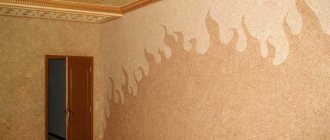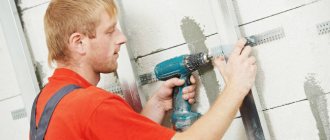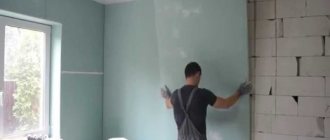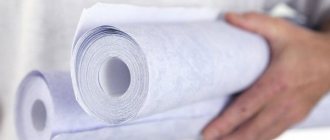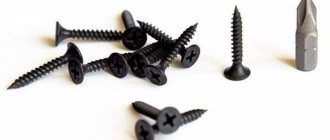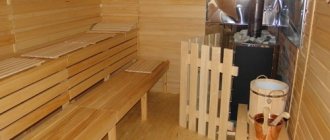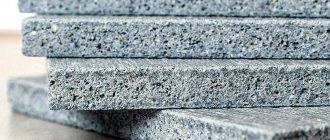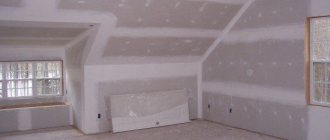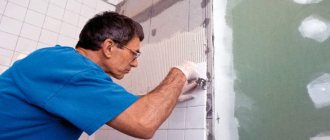Having decided to update the interior of our apartment, we go in search of suitable building materials. Nowadays, plasterboard is at the peak of its popularity; it is used to create ceiling structures, wall cladding, slopes, interior partitions, niches, portals, and arches. This material has earned people's love due to the ability to create with its help a perfectly flat surface, ready for finishing, while it takes very little time and effort to install drywall sheets. However, there is an opinion that drywall is harmful to health, and we decided to find out if this is true.
What exactly is drywall?
In order to assess the danger of drywall, you should first understand what is included in its composition:
- The key element of this sought-after building material is gypsum. In fact, it is an absolutely natural, natural material that was previously burned at a high temperature and then ground. It is safe for people and the environment and has zero radioactivity.
- In small quantities, PVA and starch can be found in drywall. As you understand, both of these elements are absolutely harmless.
- The hardened gypsum core is pressed between two cardboard sheets. So the wrapping of our material is not dangerous.
The described composition refers to standard plasterboard, which has a gray shell color and is most often used in living rooms. As you can see, there are no complaints about the composition of the material regarding safety and environmental friendliness.
There are also several other types of drywall: moisture- and fire-resistant. They have a slightly different composition because they contain special additives. The core of moisture-resistant plasterboard contains hydrophobic additives, and the gypsum core of the fire-resistant material is reinforced with glass fibers, contains crystallized water and fire-resistant elements. Each of the additives and impregnations used undergoes the strictest quality and safety control.
USEFUL INFORMATION: Sheathing walls with plasterboard without frame and profile (video)
Rumors and speculation
Opinions that drywall can be dangerous to human health continue to multiply and there are discussions about this between supporters and opponents of the material. Moreover, it is not always clear whether this is a dispute between real people or just “dirty games” of competitors. Of course, any building material, especially those used for interior decoration in an apartment or residential building, has its advantages and disadvantages. But the main thing is that it is not harmful to the health of people living in the premises. Therefore, if there are even slight suspicions about this, you need to thoroughly understand it in order to avoid a negative impact on the health of household members. To understand whether drywall is actually harmful, you need to understand what it consists of.
What is the harm of this material?
The answer to the question whether drywall is harmful can only be affirmative in the case of gross violations of the production process. Namely, when the manufacturer uses low-quality substances and additives with untested properties. Quite often, unscrupulous Chinese manufacturers, working not on quality, but on super-low prices, add formaldehyde or phenol to the composition of drywall.
You can protect yourself only by purchasing materials from trusted suppliers, as well as by mandatory checking of quality certificates and conclusions of the relevant services.
What brand of drywall do you use?
Violation of production technology
Sometimes a manufacturer tries to save on raw materials and violates production technology by using cheap, untested additives containing phenols and formaldehydes.
To avoid accidentally purchasing toxic gypsum plasterboard, it is better to purchase products from well-known and trusted manufacturers and demand to see a quality certificate. When purchasing, you should pay attention to the following signs of material quality:
- plaster should be snow-white;
- have a uniform structure, without dust and large inclusions;
- the filler should not crumble or crumble;
- the surface of the cardboard is smooth, without bulges or dips;
- The thickness of the cardboard should be the same along the entire length.
Possible health hazards when working with drywall
In addition to the direct harm to health described above, drywall can also cause it indirectly:
- Any type of work performed with the use of this material is associated with its cutting, as well as the dust released during its implementation. Inhaling it can lead to irritation of the mucous membranes and allergic reactions. Therefore, when working with drywall, it is recommended to use protective masks and goggles that protect the organs of vision and breathing while cutting, and carefully collect all accumulated dust with a vacuum cleaner and not sweep it away.
USEFUL INFORMATION: How to cover a ceiling with clapboard?
- Use of material not for its intended purpose. If ordinary drywall was used to decorate the walls in a room with high humidity, then when moisture enters, a favorable environment for the proliferation of fungi, mold and pathogens appears. In addition to the unpleasant odor, their active reproduction can significantly harm the health of all people in the room.
- If window slopes are made of ordinary plasterboard sheets, then the accumulated condensate can lead to the same consequences as described just above. Therefore, we recommend using either moisture-resistant material for these purposes, or performing mandatory treatment with a fungicidal agent.
Plasterboard radiation. Features of gypsum plasterboards that can cause unpleasant consequences
In the photo - installation of gypsum boards on a slope without a frame
Is drywall harmful in an apartment? Yes, if installed incorrectly. First of all, it is necessary to take into account that gypsum perfectly absorbs moisture and not only that which directly falls on the sheet, but also moisture from the air.
Therefore, very often you can observe fungus and mold in the corners of a room that is sheathed with gypsum plasterboard without complying with the norms and building regulations.
Basic rules for installing gypsum boards:
- Ideally, drywall should be mounted on a metal sheathing, but in some cases it is possible to cladding directly on the walls using the Ceresit adhesive mixture.
- I very often listened to complaints about the appearance of fungus and asked the same question - were the walls primed? Almost always the answer was no, but why?
The walls must be primed
- Before installing the sheathing, the wall must be treated with a deep penetration antiseptic impregnation. Since often in places where cold bridges form on the wall, moisture accumulates and fungus and mold appear.
- When installing over the sheathing, the voids between the wall and the sheathing must be filled with insulation. You can use mineral wool, polystyrene foam or natural insulation based on hemp or flax.
Installation on metal lathing
- Sagging sheets on the ceiling and waves appear due to too large a pitch of the sheathing, as a result of cracks and deformation of the entire structure.
- If the joints between the sheets are not puttied using a reinforcing mesh, then cracks will certainly appear, followed by fungus and mold. Especially when installing drywall with your own hands, pay attention to carefully sealing all joints and places where the sheet adheres to the walls.
- You cannot install regular gypsum boards in bathrooms and toilets, as well as in the kitchen, where there is a lot of water vapor.
- The instructions require proper storage of the material. If you don’t follow the rules, your brand new cladding may be ruined within a week. The sheets must lie in the room where they will be installed to acquire the same humidity. When the gypsum board dries suddenly and gets wet, it cracks.
It is important to remember that plaster instantly absorbs moisture, so any harmful fumes will remain in the finish forever.
Mold on window slopes
- If the slopes get wet due to poor ventilation and waterproofing, then the fungus will immediately spread to the finishing.
In a residential building, cladding walls and ceilings with gypsum plasterboard is harmless, but only if it is carried out in compliance with all installation standards and regulations.
Recommendations for choosing drywall
Use the advice of experienced builders when planning and carrying out repair and finishing work using plasterboard sheets:
- Examine the core of the drywall sheet; its shade should be as close to white as possible. Gray, pink or other colors indicate that the quality of the material is not the best.
- The texture of the core material should be uniform and not peel off from the cardboard wrapper.
- The cardboard shell itself must be smooth, without peeling, swelling and similar defects, and its thickness must be uniform.
- Based on the characteristics of the room in which you plan to use drywall, choose the right type.
- Before making a purchase, be sure to ensure that you have all the necessary certificates.
- Monitor the storage conditions of the stock of sheets, give them some time to acclimatize.
- Install the material strictly according to technology.
- Use special devices to protect your eyes and breathing.
By using our advice correctly, you will be able to choose the right material for your own needs, prevent its negative influence, and protect yourself and your loved ones.
Potential danger: when is gypsum plasterboard really harmful?
Installation errors
Whether drywall is harmful or not depends entirely on the person using it. So, if you violate the rules of working with it, you can somewhat undermine your health. Cutting gypsum boards results in the formation of a certain amount of gypsum dust. Like dust of any other origin, when it comes into contact with mucous membranes, it irritates them. If such exposure is prolonged or regular, it eventually leads to various types of respiratory diseases. In order to avoid such troubles, it is enough to use personal protection during work, and after it, remove the resulting dust.
And above all, an illiterate choice of gypsum plasterboard brand. It must be remembered that it is a porous structure. If it is constantly exposed to moisture, it becomes an excellent breeding ground for microorganisms. For example, if you made a plasterboard ceiling in the bathroom, is it harmful? In general, yes: condensation gradually accumulates in it, and as a result, mold colonies are formed. They release mycotoxins into the room, which reduce immunity and are allergens. Perhaps this is the only way that drywall is harmful to humans, and even then claims should be made not to the material, but to yourself - for mistakes during its purchase and installation.
